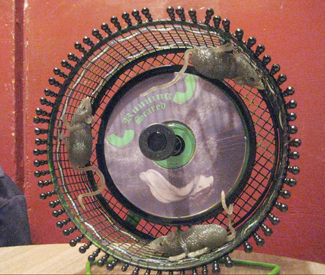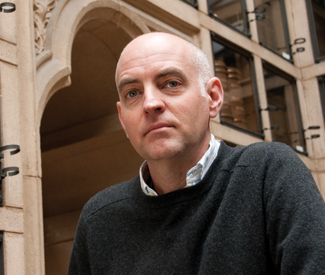Man, there were a lot of beards at the Fillmore last Thursday. Not the close-cropped beards that I swear some Bay Area men grow in hopes that a girl or boy wants to talk about it. But shaggy ones. The kind that you really can’t make a statement about. Because they aren’t a statement, unless it’s about their state of unwash.
I was at the Tame Impala show, and the beards were out in force. There were also a smattering of mods and hippies, a larger group of rocker girls with tough eyes and shiny hair, with their boyfriends, and a small slice of older music lovers.
I suppose that’s what happens when a band of quality has such disparate influences – think Beatles, circa “Tomorrow Never Knows” with all the musical toys of the Flaming Lips, a good dose of groove, and big, Nirvana-esque drumming. Tame Impala is an Australian psych-rock band with only two full-length albums under its belt, Innerspeaker, and most recently, Lonerism, and it was on its second to last stop of a sold-out tour.
It was a promising start for Kevin Parker, and his chums. Parker, the mastermind, takes a Brian Wilson-type of musical approach – bury yourself in the studio, write the songs, and play almost all the bits, make the album, and call in the band for the live shows.
http://www.youtube.com/watch?v=H570ifQfpDk
Tame Impala is Parker’s baby, and it kind of showed a bit more than I would have liked. Yes, the band can play faithful reproductions of the music from the albums, and and I did get the shivery tingles on songs like “Gotta Be Above It,” the show’s opener, and “Apocalypse Dreams.” But in general, the band lacked showmanship, and energy.
Call it tour exhaustion or what-you-will, but Parker, with his politeness and shy smiles, took the stance of a young boy playing at a recital, while the rest of the band pretty much took a step back from the audience and played things spot-on. The most character came from drummer Jay “Gumby” Watson, who took some serious risks during his solos, and leant some drama to the show.
There were some really strong moments, though; “Elephant,” one of the singles off the new album, was one of them, the groove driving and everything played hard, to the wall. And, the audience was into it; there was plenty of bouncing shiny hair, and the bearded folks nodded their heads emphatically. The encore turned into a sing-along for the die-hards.
But there was a lurchiness to the performance — songs didn’t flow from one to the next, and my emotions just weren’t effectively manipulated, dammit. One minute I wanted to dance. The next I just stood and looked at the visuals, an acid-green scribble that pulsated to the beat, like an exploding star on repeat, until the show grabbed my attention again.
I have high hopes for Tame Impala, perhaps too high, which is why I’m disappointed. I think their albums are some of the best in the past couple of years. But they aren’t cohesive performers, and I can only give them a middling grade.


